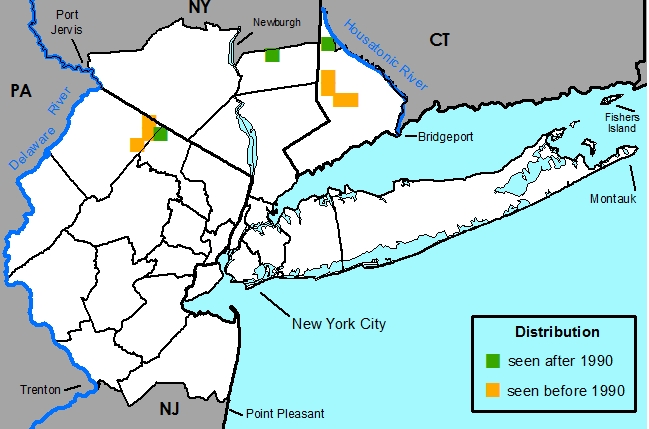Viburnum lantanoides Michx. - Hobblebush
Common Names
HobblebushField Identification
Shrub with opposite, rounded, toothed leaves; with small white flowers followed by red berries.Medicinal uses
Disclaimer: The information provided here is for reference and historical use. We do not recommend nor do we condone the use of this species for medicinal purposes without first consulting a physician.Used by Native Americans for treatment of migraines, sore chest, shortness of breath, venereal disease, and as a fertility drug and love medicine.
Other uses
(Rehder, 1940) (Flint, 1983)Used as an ornamental in landscaping situations, hardy to USDA zone 3.
Nomenclature
Viburnum lantanoides Michx., Fl. Bor.-Am. 1: 179. 1803.?Viburnum americanum Mill., Gard. Dict. ed. 8, V. no. 8. 1768.
Viburnum lantana var. latifolium C. F. Ludwig, Neu. Wilde Baumz. 55. 1783.
Viburnum alnifolium Marsh., Arbust. Am. 162. 1785.
Viburnum lantana var. grandifolium Ait., Hort. Kew. 1: 372. 1789.
Viburnum lantana var. canadensis Pers., Syn. Pl. 1: 327. 1805.
Viburnum grandifolium Smith in Rees, Cyclop. 37: V. no. 142. 1817.
TYPE: unknown
*Viburnum lantanoides f. praecox (Kache) Rehd., J. Arnold Arb. 28: 445. 1947.
Viburnum lantanoides praecox Kache, Gartenwelt 16: 496. 1912.
Viburnum alnifolium f. praecox Hesse, Mitt. Deutsch. Dendr. Ges. 1912(21): 371. 1913.
TYPE: unknown
Description
HABIT Perennial, deciduous, phanerophytic, shrub, monoclinous, 1-3 m tall.STEMS Main stems ascending or erect, round. Bark smooth, not exfoliating, dark brown or brown. Branches ascending. Twigs dark brown or brown, terete, 3-6 mm in diam., smooth or lenticellate, glabrous or with two to five-armed fasciculate-stellate hairs, brown or light brown, sparse or moderately dense or dense, distributed apically, not glabrescent, eglandular, scurfy toward distal end. Pith white, round, continuous, nodal diaphragm absent. Sap translucent. For a detailed discussion of stem architecture see Donoghue, 1981. For a detailed analysis of the root anatomy see Gasson, 1979.
BUDS Terminal and axillary, scattered along stem; naked. Leaf scars thinly crescent-shaped. Vascular bundle scars 3.
LEAVES Opposite, simple, 2 per node, divergent from stem. Stipules absent. Leaves petiolate, petiole furrowed, 1-5 cm long, with two to five-armed fasciculate-stellate hairs, dense, distributed throughout, not glabrescent. Leaf blades: abaxial surface light green, adaxial surface green, ovate or widely ovate, bilaterally symmetric, 7-18 cm long, 4-15 cm wide, chartaceous, base obtuse or cordate, margin serrulate, apices mostly short-acuminate, sometimes acuminate or acute, abaxial surface with two to five-armed fasciculate-stellate hairs, brown or light brown, sparsely to densely distributed throughout, not glabrescent. Adaxial surface with two to five-armed fasciculate-stellate hairs, white or light gray, sparsely or moderately densely distributed throughout; glabrescent.
INFLORESCENCES Bisexual, compound, terminal umbelliform cyme; densely stellate. Peduncle absent, inflorescence sessile. Bracts sessile, linear triangular, apex acute, caducous; densely stellate. Bracteoles 0 or 1, at base of pedicel or at apex of pedicel, linear triangular, apex acute, densely stellate, caducous.
FLOWERS Serotinous, formed on last season's growth, bisexual, with sepals and petals readily distinguishable from one another, 5-merous, fragrance absent, marginal flowers larger and sterile. Calyx actinomorphic, tubular, of fused sepals, persistent, abaxial and adaxial surfaces light yellow or white, tube glabrous. Sepal lobes 5, triangular, lobes stellate. Corolla actinomorphic, of fused petals, deciduous, abaxial and adaxial surfaces light yellow or white, marginal corollas larger and sterile. Petal lobes 5, 2-2.5 mm long, margin entire, apex obtuse, abaxial and adaxial surfaces glabrous. Petals lobes of marginal flowers 7-15 mm long, sometimes tinged with pink. Gynoecium syncarpous. Carpels 1. Locules 3, 2 abortive, 1 fertile. Stigmas 1, 3-lobed on a short stylopodium at the top of the ovary. Styles 1, short, conical, glabrous. Ovary inferior, glabrous, eglandular. Placentation axile or parietal. Stamens 5, epipetalous, exserted, haplostemous. Anthers light yellow, glabrous. Filaments white, straight, glabrous, adnate to base of petals.
FRUITS Drupe, red, turning dark, ovoid, 8-10 mm long, 6-8 mm wide, glabrous, with persistent stellate calyx.
SEEDS Seeds 1, yellowish orange, lenticular, 7 mm long, 6 mm wide, glabrous, pusticulate, with grooves.
Habitat
Found in mesic to moist rich woods.Distribution
Native to Eastern North America.
United States -- CT, GA, KY, MA, MD, ME, NC, NH, NJ, NY, OH, PA, RI, TN, VA, VT, WV
Canada -- NB, NS, ON, QC
New York Metropolitan Region -- Native to northern sections of the metropolitan area.
Rarity Status
Heritage global rank -- G5Connecticut -- Not listed
New Jersey -- S1
New York -- Not listed
Species Biology
FloweringMycophily -- Temnostoma spp.
Endozoochory -- Avian Frugivores: Pinicola enucleator (Pine Grosbeak), Acanthis flammea (Redpoll), Cardinalis cardinalis (Cardinal), Vireo olivaceus (Red-eyed Vireo), Bonasa umbellus (Ruffed Grouse), Phasianus colchicus (Ring-necked Pheasant), Meleagris gallopava (Turkey), Turdus migratorius (Robin), Sturnus vulgaris (Starling), Catharus minimus (Gray-cheeked Thrush), Catharus guttata (Hermit Thrush), Catharus ustulata (Olive-backed Thrush), Myiarchus crinitus (Great Crested Flycatcher), Bombycilla cedrorum (Cedar waxwing), Dryocopus pileatus (Pileated Woodpecker)
Mammals: Peromyscus spp.(White-footed Mice), Tamias striatus (Chipmunk), Euarctos americanus (Black Bear), Vulpes fulva (Red Fox), Sciurus carolinensis (Eastern Gray Squirrel), Sciurus niger (Eastern Fox Squirrel), Sylvilagus floridanus (Cottontail Rabbit), Mephitis mephitis (Skunk)
Fedec, 1973 Giersbach, 1937 Schopmeyer, 1974
Viburnum seed is slow to germinate and most species have embryo dormancy as well as seedling (epicotyl) dormancy and hard seed coats. Germination is epigeous. Stratification at a constant 20 degrees C or a daily alternating temperature of 20 to 30 degrees C for germination followed by a low temperature pre-treatment for seedling production generally gives the best results. Seedling dormancy might be overcome by removal of the cotyledons or by a treatment of gibberellic acid (GA3). Seed can probably be stored in a sealed container at 41 degrees F with little loss of viability after one to two years.
Dried seeds can be stored at low temperature for several years. Young & Young, 1992
